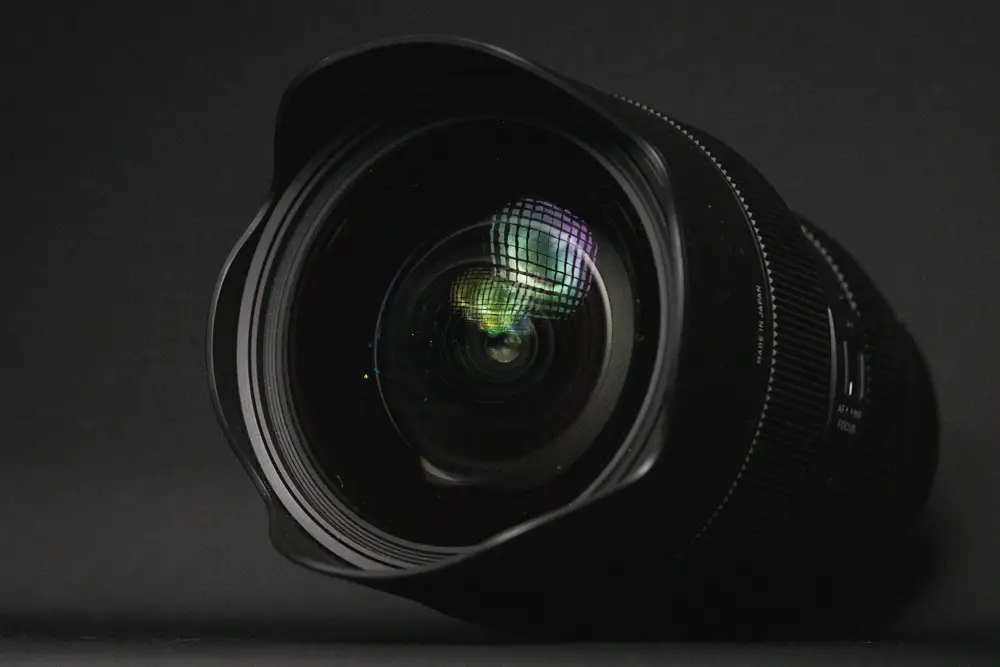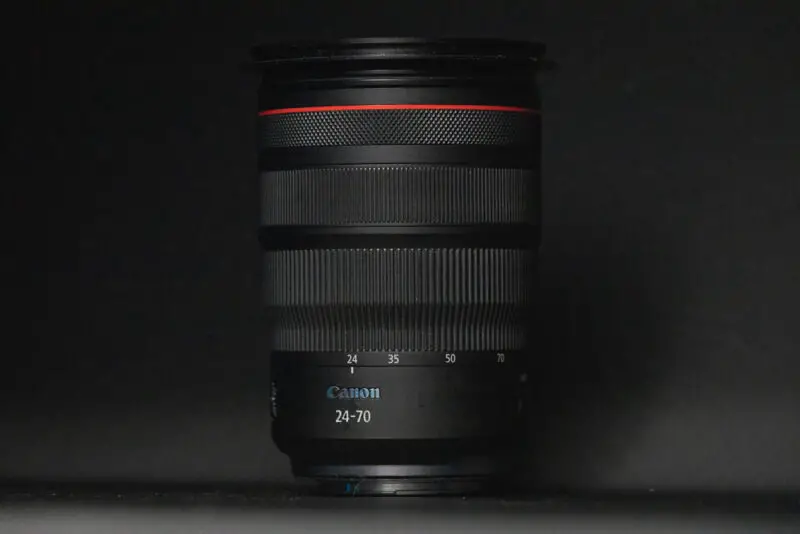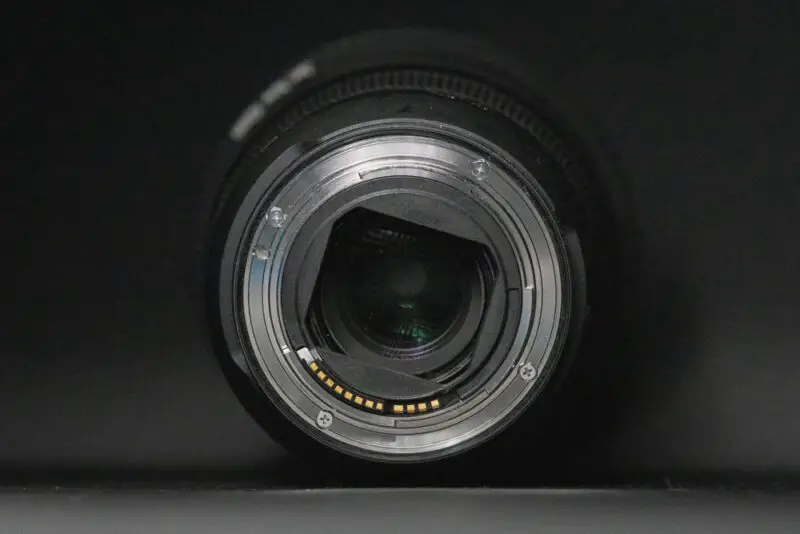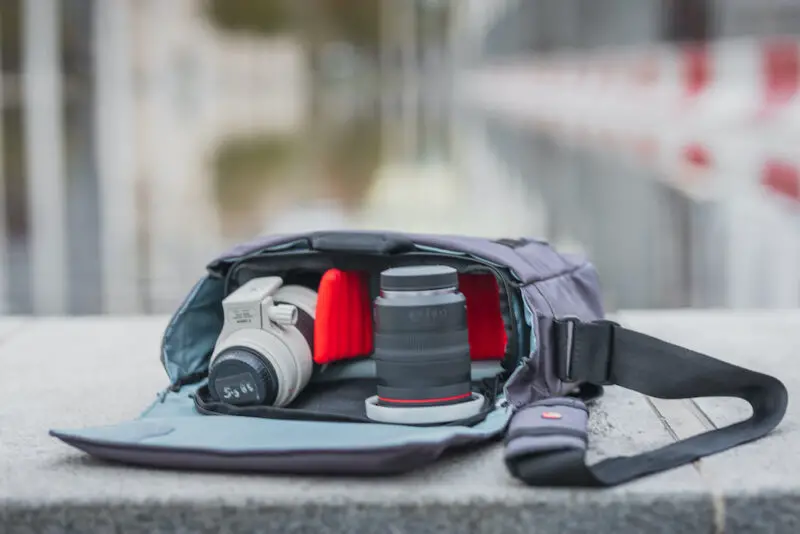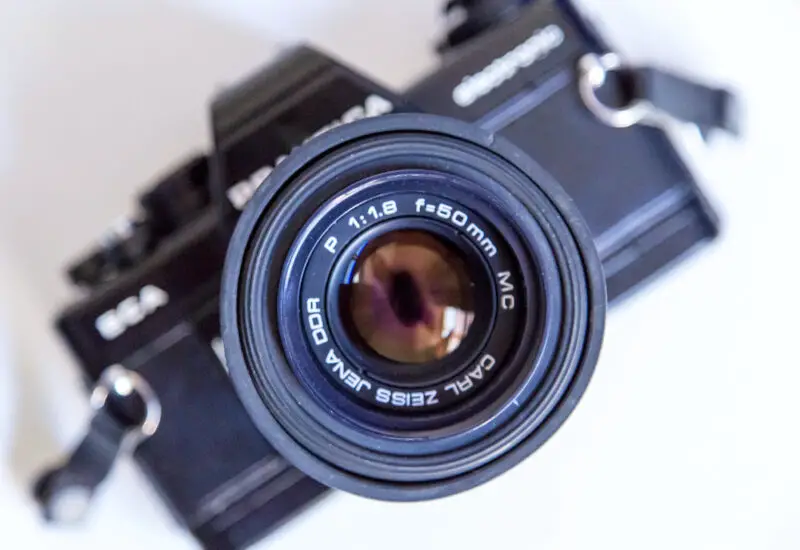Whether you bought your current camera used or brand-new, chances are it probably came with some kind of kit lens. But what exactly is a kit lens? Does it take worse pictures than a non-kit lens? Better ones? Does it matter? Should you care?
These and many other questions are the ones that we will be taking a look at in the following guide. Strap along, because it’s going to go in-depth!
- What is a Kit Lens?
- Is a Kit Lens Really a Bad Choice?
- Should You Use a Kit Lens?
- How to Get The Most
What Is A Kit Lens?
Let us begin with the most basic of the basics. What exactly is it that we’re dealing with here?
In short, a kit lens is any lens that is bundled (“kitted” in photography lingo) with a certain model of camera.
Usually, this applies to lower-end models such as entry-level DSLRs, where the price of the overall “kit” matters more to first-time buyers than the price of the camera body alone.
But kit lenses are not just for beginners! Pro-grade camera bodies are often kitted with a lens as well. For example, when the Nikon F100 came out in 1999, its kit lens was the Nikkor 28-70mm f/3.5-4.5D. This was later replaced by a 28-105mm variant.
Mind you, this is the last of the great line of Nikon’s compact professional film camera bodies we’re talking about. And accordingly, its kit lenses are now immensely well-regarded by amateurs and pros alike.
So, a kit lens doesn’t necessarily mean a cheap or poor design, even if that has become the primary association with the word for many photographers out there. But why is that?
Is it all just snobbery coming from those who can afford the latest and greatest or is there a kernel of truth to the idea that kit lenses are lacking in some way?
Is A Kit Lens Inherently A Bad Choice?
If you’ve spent any significant amount of time pursuing this photographic hobby of ours, then I won’t need to explain to you the sometimes overbearing stigma kit lenses are subjected to.
Derided as low-quality cheapo lenses that can’t take a good photograph, the number one advice newbie photographers seem to get these days is “don’t shoot with the kit lens”.
Now, this wasn’t always the case.
When the aforementioned Nikon F100 was new, nobody frowned at its inclusion of kit lenses. They were a great value when sold together with an already great camera!
Likewise, in the 1970s, nobody scoffed at the average Olympus shooter for using their “kit” 50mm f/1.8 lens. This was excellent glass we’re talking about, and bought separately it could fetch a dear sum – both then and now.
DSLR Kit Lens History
But with the new millennium, some things did change.
Not only the arrival of the DSLR but also changing trends in lens design led to a rethinking of the “kit” philosophy.
Instead of standard primes around 50mm in focal length, the most common kit lens from the late 90s onward became a midrange zoom.
This made sense, as advanced zoom lenses had become incredibly popular with pros during the 80s. The refinements in technology from that time were now dribbling down to amateur consumers as well.
Both Nikon and Canon would eventually settle on an 18-55mm zoom range for their kit lenses. Remember that all earlier digital cameras had crop sensors. Hence, this gave a field of view equivalent to a 28-82mm lens on full-frame.
In other words, compared to the primes of old, these newer kit lenses gave the (inexperienced) photographer a lot more to fool around with.
To drive down the weight of the resulting complex optical designs, they were made with an increasingly high number of plastic parts.
This is where problems started appearing.
Disadvantages Of Kit Lenses
21st-century kit lenses might have been smaller, more versatile, and overall more useful for the beginner photographer than what had come before.
On the other hand, they were flimsier, slower, and less precise too. Oftentimes, they lacked even basic conveniences like an aperture ring or a standard-size filter ring.
And with maximum apertures between f/3.5 and f/5.6, they weren’t that great with action or low light either. Compare that to the f/1.8s or f/1.4s that many cameras from the 80s and earlier had been kitted with!
This is where the bad reputation of kit lenses comes from. Suddenly, makers of world-class, metal-bodied pro lenses like Nikon were producing these dinky little “plastic fantastics”.
This is all because, until the tail end of the 90s, the buyer demographic for the kit lens we know today simply didn’t exist. The entry bar to interchangeable-lens photography had stood much higher for most of the century compared to where it is now.
In that sense kit lenses, and the cheap DSLRs they were attached to, democratized photography further than anyone could have ever anticipated.
Due to market pressures, this meant an overall downgrade in quality at what now counted as the “low end”.
Changes, And Upsides
The fate of kit lenses was not set in stone. True, most people starting out in photography today will still go for a cheap DSLR with an 18-55mm.
However, not every kit lens is equal.
Nikon alone has by now produced six different versions of its own 18-55! Each of them carries over improvements in autofocus, ergonomics, optical design, and more while maintaining close to the same price as its predecessor.
These iterative improvements meant that, by the mid-2010s, there were many kit lenses that could go head to head with more expensive zooms.
Sure, a kit lens is not going to outclass a top-of-the-line, four-figure pro lens. However, for all but serious working pros and experienced veterans, the kit lenses of today are more than good enough.
In fact, most of them are pretty neat! Earlier kinks, such as diffraction issues, poor focus, and overall image quality quibbles, have mostly been worked out by now. Ergonomics have also steadily improved.
What you get today in 2022 are blissfully cheap lenses with a very useful zoom range that are simple and easy to use. What more could you want?
Should You Use a Kit Lens?
Now that we have laid out what kit lenses are, how they became what they are today, and why some people consider them the incarnation of everything bad and evil in photography, the next question to tackle is whether they’re right for you.
Arguments For Kit Lenses
First, let’s build a strong case for the kit lens.
Perhaps one of the most crucial arguments for a kit lens is a certain photographic adage.
It goes something like, “The best lens in the world is the one you have on your camera”.
Alright – don’t yawn, don’t roll your eyes. There’s a good point there, I’m serious!
Think about it in this way. Because most photographers start out with a kit lens, that lens is then automatically the best to take with them on every photo walk. There’s no better way to improve technique quickly over time.
And no, throwing money at more expensive gear won’t make the learning curve any easier for you. Working with what you’ve got for the time being will.
Because kit lenses tend to be cheap – and cheaply made – throwing them around is not so much of a big deal. If something breaks, it’s an easy fix (or replacement).
Even if you buy used and your camera doesn’t come with its kit, that lens is probably going to be the most affordable one to buy separately, too.
As I mentioned before, their broad zoom range gives you a ton of room to experiment with different focal lengths and perspectives.
This helps you further practice in different environments and develop your own style!
Arguments Against Kit Lenses
Some are harsh opponents of kit lenses. Sure, a lot of it comes down to a certain kind of photographic snobbery. But there is also some merit to the anti-kit lens position.
For example, while it’s true that kit lenses allow you to play with a lot of different focal lengths, not everyone agrees that this is a good thing. Some photogs swear by prime lenses or narrow-range zooms, claiming that their limitations are actually an advantage.
By restricting yourself to a fixed yet versatile focal length such as 50mm, you learn more quickly about perspective, the field of view, and depth of field. Or so the saying goes, at least.
Is this objectively true? Well, yes and no.
The fact of the matter is that for every photographer who has achieved greatness by practicing on primes, there’s another who has done the same with their kit zoom.
It seems to be mostly a matter of personal preference and style.
What is an objective disadvantage of kit lenses is that at any of their individual focal lengths, they are never going to offer the same performance as an equivalent prime lens.
Sure, technology has come a long, long way.
But no amount of tech can bend or break the laws of physics. Glass remains glass. Optics still work the same way they did 50, 100, even 1,000 years ago.
In other words, any prime lens will probably be faster and sharper than your kit zoom.
There will probably be less distortion and fewer optical flaws, too. Yes, that includes the cheapest of the cheap primes that go four double-digit prices used.
It’s worth noting though that this gap in performance has drastically narrowed since the first 18-55s started appearing in the 2000s.
How to Get the Most Out of Your Kit Lens
So, what if all you’ve got is a little starter DSLR or mirrorless camera and its standard kit lens?
How can you get the most out of your equipment in order to maximize the quality of your photographs?
In this section of our guide, we’ll be taking a look at just that. Remember: with healthy practice and the right technique, any gear can be used to take amazing shots!
Know Your Lens
This first step is something that many overexcited beginners sadly skip. Knowing your lens means understanding every inch of its specs and what they mean in practice.
It also means knowing how to put its unique strengths and weaknesses to good use.
As an example, let’s go with the ubiquitous 18-55mm f/3.5-5.6 midrange zoom.
The broad zoom range here means you can make use both of dramatic wide-angle perspectives as well as a moderate telephoto reach suitable for portraits.
However, do take note of the variable aperture!
Only pro-grade zoom lenses generally have a fixed aperture across their range.
By comparison, nearly all kit lenses these days have a variable aperture that is largest at the lowest focal length. Conversely, at the telephoto end, you’ll have to deal with a slower aperture.
What this means is that if you want to play with fast-shutter speed action or low light photography, then you should learn how to do this with one of the smaller focal lengths.
At the same time, dealing with a slow telephoto range can be just as much of a learning experience.
Practice Focal Lengths
The biggest advantage in having such a wide-range zoom is that you have a large number of focal lengths to select from, right at your fingertips!
To make the most out of this freedom, consciously practice different focal lengths in isolation.
Avoid constantly zooming back and forth in order to get a perspective that looks “just right”.
Instead, set your lens to a certain focal length, such as 28mm, and walk around to see how this feels. How does the perspective impact your shot? What emotions does it evoke?
You can always move around to adjust your composition, but each focal length carries with it a unique look that is worth studying and getting used to. Being conscious of your choice of focal length can do wonders for your situational awareness.
Make Use of Convenience Features
While kit lenses generally don’t come loaded with lots of fancy gadgets (though some do), yours might still have a few aces up its sleeve that you’ve never considered.
For example, check the lens barrel for something called “VR” (for Nikon) or “IS” (for Canon).
These stand for “Vibration Reduction” and “Image Stabilization”, respectively. Other brands may have yet different and even more confusing names, but the underlying technology is identical.
All that VR or IS means is that your kit lens is internally stabilized to reduce camera shake. Especially at longer focal lengths, this can make a day and night difference. Play with VR a bit to see what it can do when shooting handheld.
Of course, if you do most of your work on a tripod, then VR will only have a marginal impact. Still, it’s one of those small things that can really improve the overall quality of your pictures if you know how to use it.
The same goes for other hidden features your kit lens might have. For example, a close look will reveal that most 18-55mm kit lenses these days have a single combined focus/zoom ring with an instant manual override.
In other words, a well-honed grip can zoom and focus the lens both automatically and manually using just one or two fingers. For sharpening your skills with action photography, these kinds of design details matter.
Moving Beyond the Kit Lens
Sure, your kit lens can be a solid performer in the right hands. Any lens can be!
To really drive the point home, you could say you don’t even need a lens for good photography – think pinhole cameras – but that’s another story for another day.
Still, at some point, you might run into some limitations. At some point, you might realize why pros generally don’t stick with their kit lenses and go on to piece together their own bags of higher-grade gear.
There are many reasons for switching from a kit lens to something more refined.
Below, we’ll take a look at each and allow you to consider whether they apply to you. If so, we’ll also give you some basic tips on how and where to move on after your kit lens.
Reason #1: Focal Length Limitations
Now, hear me out. While it’s true that I praised the broad zoom range of today’s kit lenses, no zoom in the world can replace an entire bag of lenses without any compromise.
Sure, there are some ridiculously expensive 28-300mm superzooms, but those are also gigantic, heavy, and everything but beginner-friendly. Besides, investing in one lens that covers such a huge range can be a bit overwhelming.
Instead of going that route, take a look at your kit lens and its focal lengths. Where do you feel there’s something lacking? Maybe you sometimes wish you could go wider for those awesome landscape shots. Or maybe a bit more reach at the telephoto end could be useful for those faraway subjects.
Whatever the case may be, try to identify any gaps there might be in your kit lens’ zoom coverage.
Reason #2: Image Quality and Aperture
You don’t have to shop for a lens outside of your kit’s zoom range. Sometimes, what’s lacking is the quality of the shots you take within that range.
Of course, when photos don’t turn out the way they should, the first culprit you should always look at is yourself. Improving your technique should be your utmost goal. Only after that can you consider the technical limitations of your gear.
But if you’re really sure that your lens is what’s holding you back, then a good look at your kit’s weak spots might be worth it. What about that slow aperture at the telephoto end? It might be limiting your too much when trying to shoot portraits wide-open.
If you want to bring out that lovely bokeh, then investing in a cheap 50mm f/1.4 or even a 1.8 could work wonders. Likewise, maybe the short end of the zoom range is looking a bit soft, or there’s too much distortion. A wide-angle prime could offer much higher-quality glass, while also being faster and more suited for this particular focal length.
Understand that a kit lens is made to be universal. It’s a jack of all trades, master of none. Try to identify which of its many capabilities you use the most, and aim for a lens that is specifically suited to those.
Reason #3: Handling
This is more of a contentious issue. Some might find that the following doesn’t matter to them at all. For others, it could be an integral aspect of the shooting experience.
The crux of the matter is that ergonomically speaking, kit lenses tend to be quite a step down from more refined gear. They might be a bit awkward to use in manual focus, for example.
You also won’t get handy indicators like a DOF scale, a focus scale, or infrared markings on the lens. This makes some techniques hard or impossible to pull off.
Consider zone focusing, for example, a very useful trick in street photography. Without markings on the lens, you’d have to remember which positions on the focus ring correspond to what focus distance, as well as remember your aperture (which most likely won’t be on the lens either). Sure, this is doable, but it does ask you to do quite a lot of math in your head while out and about.
A lens bought purely for ergonomics and feel might not necessarily take better pictures on its own. However, lenses don’t exist in a vacuum. Their effectiveness depends very much on how easy to use they are for the photographer that wields them.
Reason #4: Durability
This, again, is not likely to apply to a large chunk of photographers. However, if you’re an outdoorsy type and frequently take your camera traveling, the toughness of your lens is worth considering.
Especially if you’re planning to dabble in sports, action, or travel photography where accidents are common, a light, flimsy plastic lens like the one that came with your camera might not cut it.
Tougher lenses don’t have to be that much more expensive, nor will you have to make huge sacrifices in image quality. Plenty of older, used lenses were built to last and are still available for cheap. If you’re not willing to go used, at least saving up for a dedicated metal-bodied lens that can stand some abuse is still a good idea.
The Best Options For A Post-Kit Lens
Without knowing anything about your particular needs or photographic experience, of course, I can’t make any objective calls on which lens would be best for you to replace your kit with.
However, based on what many young photographers tend to go for as they outgrow their initial kit, I can make some recommendations.
Option #1: A Nifty Fifty
This is the classic. Back before we called them “kit lenses”, almost every SLR worth its salt came with a fast-aperture 50mm lens. The appeal is obvious: the focal length is relatively universal and allows you to capture many different kinds of subjects.
At the same time, you get a really huge aperture for fast action and subjects in low light.
And to top it off, “nifty fifties” are usually the least expensive in the major manufacturers’ lens lineups. No wonder then that so many photographers move on to a 50mm as their step-up lens.
Option #2: A More Specialized Zoom
Maybe you don’t like the fixed focal length of primes or aren’t sure yet which exact focal lengths are your type.
But if you’ve already got a general leaning, let’s say towards the telephoto range, then investing in a zoom that covers that range exclusively could be a great call.
Instead of the relatively broad 18-55mm, how about for example a 70-200mm? With this, you can work solely on those tele focal lengths and hone your skills.
Alternatively, if the wide end is what you’re after, there are plenty of 14-24mm lenses to choose from.
A specialized zoom like this won’t just be of higher quality than your kit lens. It will also train you to work within a more narrow range of perspectives and develop a stronger style.
Option #3: A Specialized Prime Lens
This is generally the option that the smallest number of photographers take when replacing their kit zoom. Honestly, it’s not hard to see why.
While a narrow-range zoom still offers you a lot of room to experiment and a fast 50mm in the right hands can be used for almost any kind of photography, other primes are far trickier beasts to master.
Consider a lens bag from way back when. Before zoom lenses became commercially viable, a “universal” outfit of lenses for general photography consisted of a 24mm, a 28mm, a 35mm, a 50, an 80 or 85, and sometimes a 135mm telephoto as well.
If you look closely, you’ll realize that these are the exact same focal lengths (in 35mm equivalent) as you get with your 18-55 kit lens! That’s no coincidence. This focal range, and those specific focal lengths within it, provide you with very distinctive perspectives and images.
But choosing individual primes out of this range can be quite tricky.
Would you, for example, rather have a 24mm or a 28mm prime on your camera for the kind of work you like to do?
The answer might be tricky to realize, especially if both lenses have nearly the same specs and price. It’s one of those things that mostly have to do with a certain sixth sense you develop after enough years of practice.
Still, there is a valid reason why these focal lengths became such gold standards, of course.
They give you very distinctive and sharp results combined with unique view angles and FOVs. You just need to know how to utilize their strengths beforehand.
